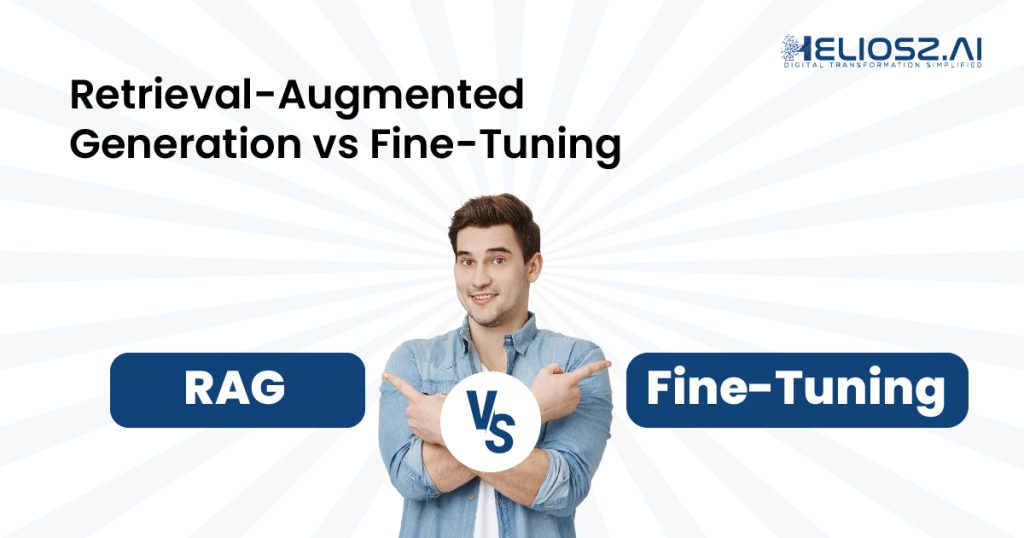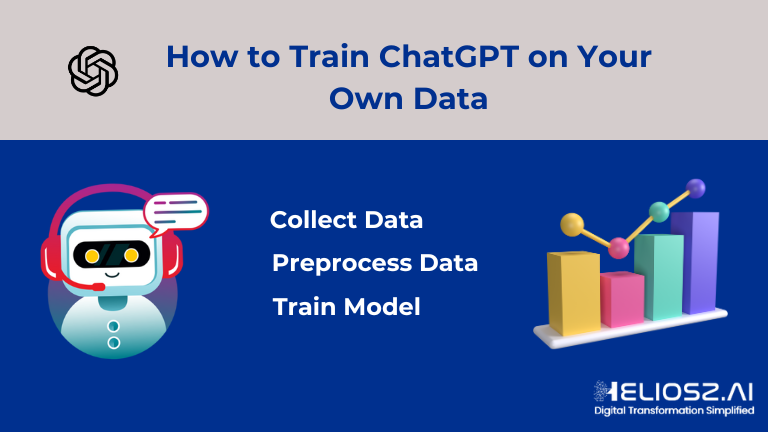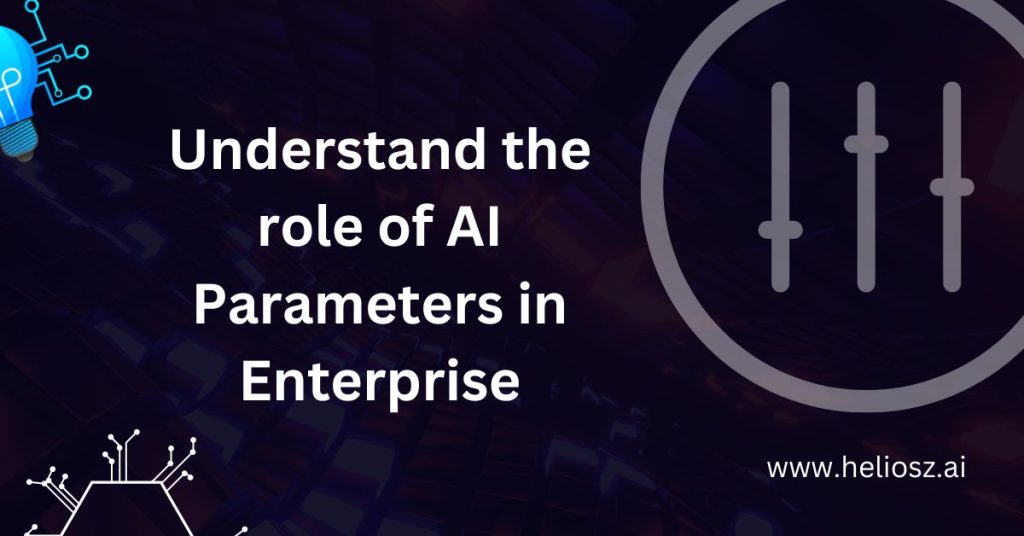
With the boundaries of large language models (LLMs) expanding day by day, companies across industries are searching for methods to fit these powerful tools to their needs. Two effective ways have emerged as the top contenders in the race of customization: Fine-Tuning and Retrieval-Augmented Generation (RAG). While both deal with boosting performance, accuracy, and relevance in artificial intelligence applications, they embrace fundamentally different approaches to reach that goal. Fine-tuning tunes the weights of a model internally to train it for some task or space, whereas RAG expands a model’s functionality by introducing external knowledge sources dynamically. The choice between the two is not only technical—it determines your scalability, cost, time to market, and the overall quality of AI experience you are offering. In this article, we’re going to delve deep into both methods, discussing their mechanics, strengths, weaknesses, and real-world applications so that you can decide which approach is most suitable to your aims.
Understanding the Basics: What Are RAG and Fine-Tuning?
Before diving into the specifics of each method, let’s define what each one entails.
Fine-Tuning
Fine-tuning is the procedure of using a pre-trained model (usually a large, general-purpose model like GPT, BERT, or T5) and retraining it on a specialized data set. This is a form of transfer learning, where the model leverages its earlier experience from a vast corpus and adapts it to a smaller task, domain, or problem.
Example: You could start with a pre-trained model on general language comprehension and fine-tune it on medical text to make it competent at answering healthcare-related questions.
Retrieval-Augmented Generation (RAG)
RAG is an architecture that integrates information retrieval systems and generative models. Rather than only using the model’s internal knowledge (potentially sparse or outdated), RAG systems read in what relevant documents or passages are contained within an outside resource, for example, a knowledge base or web search, and leverage the obtained information to return more accurate and contextually fitting answers. Example: A RAG system might employ a search engine to retrieve pertinent documents on a subject and subsequently summarize this data to create an extensive response to a user query.
Read Also: Fine-tuning vs Prompt Engineering: How to Optimize Your AI Models for Any Task
Key Differences Between RAG and Fine-Tuning
Now that we know the fundamentals, let’s take a look at the main differences between these two methods.
a) Approach to Knowledge
Fine-Tuning: A fine-tuned model is confined to the knowledge it has acquired during training, which may be incomplete or old. After being trained, its knowledge is locked, and the model cannot acquire new facts unless retrained.
RAG: RAG models, in contrast, access the most appropriate information from an external source at inference time. What that implies is that the model is continuously drawing on the newest and most applicable data available, without requiring retraining.
b) Performance on Task-Specific Information
Fine-Tuning: Fine-tuning is great for those cases where you have a particular domain or limited focus. As an illustration, if you are doing a certain type of question-answering (e.g., legal questions, health-related inquiries), fine-tuning a general-purpose model using that specialized data can greatly enhance performance.
RAG: RAG systems tend to be more effective since they don’t need to be retrained on huge datasets. Rather, they leverage external sources of knowledge, like databases or documents, which can be searched and indexed in real-time. This implies RAG models are potentially more economical in terms of training resources, as they won’t need to be retrained as often.
c) Flexibility and Generalization
Fine-Tuning: Fine-tuned models may become very specialized to the data they were trained on, at times to the extent of overfitting. This may imply that they work poorly on tasks or data beyond their training scope.
RAG: RAG models are also more versatile since they can draw in various information from outside sources, so they are more task-variant. Provided the retrieval system is well developed, a RAG model will generalize more to new questions and support various topics.
d) Model Size and Scalability
Fine-Tuning: As the fine-tuning procedure modifies the model’s weights, this leads to a tailored version of the model, which could become extremely big and maybe cumbersome to deploy.
RAG: A RAG system is more scalable as it decouples the generative model from the retrieval part. Through an independent scaling external database or knowledge base, RAG systems could deal with increasing datasets or shifting domains with smaller overhead.
When to Choose Fine-Tuning?
Fine-tuning might be the optimal choice if your application possesses one or more of the following attributes:
- Narrow, Specific Domains: If you are dealing with a niche domain where domain-specific, high-precision knowledge is necessary, fine-tuning is probably your best bet. It enables the model to capture the intricacies of that domain.
- Limited External Information: If your target domain rarely changes, or there’s minimal external data to fetch (e.g., proprietary or special-case datasets), fine-tuning would be the simplest solution.
- One-Time Training with High Precision: Fine-tuning is best when you’re seeking high-quality, task-specific answers that don’t require ongoing updates and revisions.
When to Choose Retrieval-Augmented Generation (RAG)
Alternatively, RAG could be the preferred option if your application has the following requirements:
- Dynamic or Evolving Information: If your application needs current information (e.g., news, current affairs, or constantly changing databases), RAG systems are able to access the latest data and give accurate responses.
- General Knowledge Requirements: RAG is particularly useful when your problem requires general knowledge creation, as it can extract from various sources and merge information. For instance, a general knowledge Q&A system or an AI assistant may be helped by a RAG setup.
- Efficient and Scalable Systems: In case you require an efficient, scalable system whose training is a problem, RAG can be a good choice. You do not have to continually retrain the model, and the retrieval enables you to scale your knowledge base without a need to retrain.
- Task Flexibility: RAG systems can comfortably perform multiple tasks without requiring custom fine-tuning. They fit well into new situations as long as the retrieval system is solid.
Real-World Examples and Use Cases
a) Fine-Tuning Example
Suppose you’re building a sentiment analysis model tailored towards customer feedback in finance. Financial review language will likely be much more distinctive from normal customer service review language, so fine-tuning a big pre-trained model in a financial dataset will help you. This will make sure the model can properly identify the sentiment in this particular domain.
b) RAG Example
Imagine a medical question-answering system that must give current information on recent medical research. Instead of using only the static information contained in a fine-tuned model, a RAG system might ask a constantly updated medical database or research articles to produce accurate answers. This way, the system is always pulling from the most recent findings.
Heliosz – Your Trusted Partner in AI Technologies
Ready to revolutionize your business with the latest AI?
We at Heliosz are dedicated to AI Agents, Generative AI solutions, and AI development across the board for your needs. From crafting more intelligent systems to automating processes to creating with GenAI, we’re here to drive your vision forward.
- Bespoke AI Solutions
- Scalable GenAI Integration
- Expert-Led Innovation
Collaborate with Heliosz – where smart tech and actual impact converge.
Conclusion: Which Should You Pick?
Fine-tuning vs. RAG is determined by your application, data needs, and resource constraints. If you need a highly specialized model for a narrow task and have the resources to train it, fine-tuning might be your best option. If your use case needs flexible, current outputs and you don’t want to retrain it too often, RAG is perhaps the better fit.
In a few instances, a hybrid might even work: fine-tuning a model on a specific task and supplementing it with retrieval-based generation for wider, more dynamic knowledge. The trick is knowing the strength of each approach and choosing the one that will work best with your project’s goals.
Both RAG and fine-tuning are incredibly strong tools in the realm of NLP, and if used appropriately, can greatly improve the relevance and quality of machine-produced content. So, whether precision or flexibility is your goal, there’s a solution that works for you.


